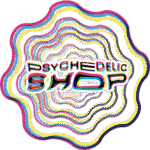Blog
The Science of Tryptamines: Structure, Function, and Effects

The Science of Tryptamines Online. The Science of Tryptamines: Structure, Function, and Effects
Tryptamines are a fascinating class of organic compounds with profound effects on both the human body and consciousness. This overview delves into their chemical structure, biological function, and psychopharmacological effects.
1. Chemical Structure of Tryptamines – The Science of Tryptamines Online
Tryptamines are derived from the amino acid tryptophan and share a core indole ring structure connected to an ethylamine side chain. This structure closely resembles serotonin (5-hydroxytryptamine, 5-HT), a key neurotransmitter in the human brain.
General Structure:
- Indole ring: A bicyclic structure consisting of a benzene ring fused to a pyrrole ring.
- Side chain: Two carbon atoms linking the indole nitrogen to an amino group (–NH₂).
Examples:
| Compound | Structure | Notable Feature |
|---|---|---|
| Serotonin | 5-HT | Hydroxyl group at position 5 |
| DMT (N,N-Dimethyltryptamine) | Two methyl groups on the amine | Potent psychedelic |
| Psilocin | 4-HO-DMT | Hydroxyl at position 4 |
| 5-MeO-DMT | Methoxy at position 5 | Intensely psychoactive |
2. Biological Function – The Science of Tryptamines Online
Tryptamines, particularly those that occur naturally, play vital roles in biological systems:
a. Neurotransmission
- Serotonin is central to mood regulation, sleep, and cognition.
- Many synthetic and natural tryptamines act as serotonin receptor agonists, especially at 5-HT2A receptors.
b. Endogenous Tryptamines
- Compounds like DMT are found in trace amounts in mammalian brains and may play a role in dreaming or altered states of consciousness.
- The pineal gland has been proposed as a possible site of DMT synthesis (though still under investigation).
3. Psychoactive Effects and Mechanisms
Many tryptamines are psychedelic, producing profound changes in perception, mood, and cognition. Their effects are largely mediated by 5-HT2A receptor agonism, which disrupts normal thalamocortical processing and alters sensory integration.
Common Effects:
- Visual hallucinations
- Altered sense of time and space
- Ego dissolution
- Emotional lability
- Mystical or spiritual experiences
Duration and Intensity:
| Compound | Onset | Duration | Intensity |
|---|---|---|---|
| DMT (smoked) | 30 sec | 5–15 min | Very intense |
| Psilocybin (oral) | 30–60 min | 4–6 hrs | Moderate |
| 5-MeO-DMT | 5 min | 15–30 min | Extreme and non-visual |
4. Therapeutic Potential – DMT
Modern research has rekindled interest in tryptamines for mental health applications:
- Psilocybin: Shown promise in treating depression, PTSD, addiction, and end-of-life anxiety.
- DMT and 5-MeO-DMT: Being explored for rapid-acting antidepressant effects.
Studies suggest these substances can facilitate neuroplasticity and emotional breakthroughs in therapeutic settings.
5. Risks and Considerations
While many tryptamines have low physiological toxicity, risks include:
- Psychological distress or “bad trips”
- Triggering latent psychiatric disorders
- Legal restrictions in many countries
- Interactions with other substances (e.g., MAOIs)
6. Conclusion – The Science of Tryptamines Online
Tryptamines are chemically simple but pharmacologically profound molecules that continue to inform neuroscience, psychiatry, and consciousness studies. Their similarity to serotonin underlies both their therapeutic potential and powerful psychoactive effects. Continued research may unveil deeper insights into their roles in the brain and mind.










